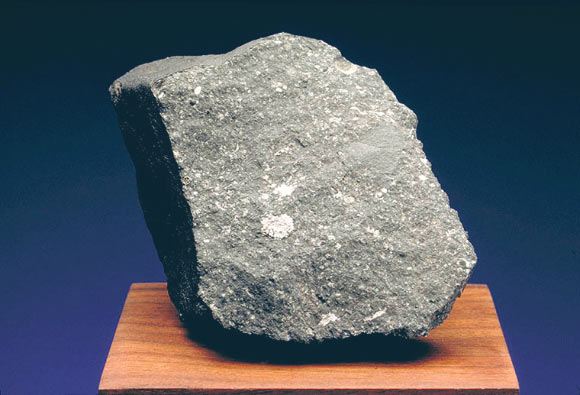Scientists from Washington University, St. Louis, Caltech and the University of Chicago have found presolar grains — tiny bits of solid interstellar material formed before the Sun was born — in Curious Marie, a sample of the famous Allende meteorite.
Source: Sci News
Curious Marie is a notable example of an inclusion, or a chunk within a meteorite, called a calcium-aluminum-rich inclusion (CAI).
These objects, some of the first to have condensed in the Solar Nebula, help cosmochemists define the age of the Solar System.
“What is surprising is the fact that presolar grains are present. Following our current understanding of solar system formation, presolar grains could not survive in the environment where these inclusions are formed,” said Dr. Olga Pravdivtseva, a researcher in the Physics Department and the McDonnell Center for the Space Sciences at Washington University, Saint Louis.
In 2016, a research team from the University of Chicago discovered evidence in Curious Marie that a rare element called curium was present during the formation of the Solar System.
This fragment of the Allende meteorite and curium are named after the Nobel Prize-winning physicist and chemist Marie Curie, whose pioneering work laid the foundation of the theory of radioactivity.
In the new study, Dr. Pravdivtseva and colleagues used noble gas isotopic signatures to show that presolar grains of silicon carbide are present in Curious Marie.
That’s important because presolar grains are generally thought to be too fragile to have endured the high-temperature conditions that existed near the birth of our Sun.
But not all CAIs were formed in quite the same way.
“The fact that silicon carbide is present in refractory inclusions tells us about the environment in the Solar Nebula at the condensation of the first solid materials,” Dr. Pravdivtseva said.
“The fact that silicon carbide was not completely destroyed in Curious Marie can help us to understand this environment a little bit better.”
“Many refractory inclusions were melted and lost all textural evidence of their condensation. But not all.”
The scientists had 20 mg of Curious Marie to work with, which is a relatively large sample from a cosmochemistry perspective.
They heated it up incrementally, increasing temperature and measuring the composition of four different noble gases released at each of 17 temperature steps.
“Experimentally, it is an elegant work. And then we had a puzzle of noble gas isotopic signatures to untangle. For me, it is like solving a mystery,” Dr. Pravdivtseva said.
Other scientists have looked for evidence of silicon carbide in such CAIs in meteorites using noble gases before, but Dr. Pravdivtseva’s team the first to find it.
“It was beautiful when all noble gases pointed to the same source of the anomalies — silicon carbide,” Dr. Pravdivtseva said.
“Not only do we see silicon carbide in the fine-grained CAIs, we see a population of small grains that formed at special conditions.”
“This finding forces us to revise how we see the conditions in the early Solar Nebula.”
The results were published in the journal Nature Astronomy.
Source: Sci News

































Leave a Comment
You must be logged in to post a comment.